Are there two forms of liquid water? This debate has raged ever since that idea was first proposed over 25 years ago. A new study now adds to the evidence that there may indeed be two. It reports direct experimental evidence for a phase transition between two liquid states – but in an ionic solution, not in pure water.1 The researchers say, however, that the state of the water in the mixture is much like that in the pure bulk liquid, strongly suggesting that water itself might show similar behaviour.
‘It is truly outstanding work,’ says physicist Eugene Stanley of Boston University, US, who was not involved in the study. ‘The experiments provide the most striking experimental evidence so far supporting this hypothesis.’
But it’s not yet a smoking gun for the putative phase transition in water itself, says Pablo Debenedetti of Princeton University, US. ‘The reasoning is elegant and the experiments appear to be well done,’ he says. But the result ‘is suggestive – no more, but certainly no less – of what may be happening in water’.
Simulated states
The idea that water has two liquid states was proposed in 1992 by Stanley, his postdoctoral researcher Peter Poole and their co-workers.2 Their computer simulations showed the liquid separating into two states with different densities, demarcated by a first-order – step-like, as in freezing – phase transition that ended in a critical point at a particular temperature and pressure where the two phases became indistinguishable.
The catch was that all this happened in water deeply supercooled below freezing point and squeezed at high pressure. In these conditions the liquid state is only metastable: provisionally stable but less so than ice. Water can be supercooled without freezing, but only up to a point. As the supercooling gets deeper, it becomes ever harder to prevent ice crystals from nucleating and triggering freezing in the whole system. At the conditions predicted for the liquid-liquid transition – below -75°C and above several thousand atmospheres pressure – ice formation is more or less impossible to prevent.
Some experiments have attempted to probe water under deeply supercooled conditions, for example by encapsulating it in small emulsion droplets to reduce the chance of ice nucleation. But none has ever reached the metastable ‘no-man’s land’ where the liquid–liquid transition is predicted.
Relying on computer simulations to deduce what water does under these conditions is dangerous, however. Water – a highly unusual liquid because of its strong and directional hydrogen bonding – is notoriously hard to simulate accurately. Some researchers have suggested that the calculations showing a liquid–liquid phase transition are not reliable, and that the two phases are an artefact of simulations that haven’t been allowed to reach equilibrium.3 Others dispute that claim.4
Two state solution
But now Sander Woutersen and Bernd Ensing of the University of Amsterdam in the Netherlands and their co-workers have found a way to keep supercooled water from freezing – albeit by rendering it impure with the addition of the salt hydrazinium trifluoroacetate.
‘The basic idea is to suppress ice crystallisation via solute addition,’ says Debenedetti. Staving off ice formation by adding salt to water is a well known effect. But what’s unusual about this particular salt solution is that it still displays almost ‘ideal’ behaviour5, implying that the solute doesn’t seem to alter the liquid structure very much. In this case, Debenedetti explains, ‘one would expect only modest deviations in water structure from the pure liquid’. Woutersen and colleagues report computer simulations showing that any changes to the water structure in the solution are much like those seen in pure water under pressure. Their infrared spectroscopy, which probes the O–H vibrations of water molecules and is sensitive to the nature of the hydrogen bonding, seems to confirm that most of the water molecules have a local environment very similar to that of the bulk liquid. This is because the hydrazinium and trifluoroacetate ions can engage in hydrogen bonding in a way that largely preserves this structure.

The salt solution can be deeply supercooled, down to around -133oC without freezing. At around -80oC the solution undergoes what appears to be a first-order phase transition which, according to infrared spectroscopy, involves two liquid states – and not, say, a transition to a glassy solid state.
‘The crystallisation of ice has been the spoiler of all other attempts to see what water “wants to do” in no-man’s land,’ says author Austen Angell of Arizona State University, US. ‘We have used the laws of ideal solutions to shove the “crystallisation curtain” aside enough to see something that looks like the reversible liquid–liquid transition that the simulations show.’
Questions remain
Ultimately, the reality of dual liquid phases in metastable water needs to be demonstrated or falsified in the pure liquid, says Debenedetti. ‘In the meantime, the careful choice of system, the clarity of thermodynamic thinking and the care in execution make this work a valuable contribution to the ongoing exploration of the phase behavior of deeply supercooled water,’ he says.
Some researchers are reserving judgement though, on whether this system can tell us anything about liquid water itself. ‘The experiment looks sound, but whether it has anything to do with pure water is an open question,’ says Alan Soper of the Rutherford Appleton Laboratory in the UK. ‘There are many examples of liquid–liquid transitions with associated critical points in mixtures and solutions, but that fact can’t be used to imply that water by itself has such a transition.’
Daniel Bowron, also at the Rutherford Appleton, agrees. ‘The paper leaves me with rather more questions than answers,’ he says. ‘The experimental work has clearly been performed very carefully and the data is beautiful, but whether this says anything about the behaviour and properties of water is a bit of stretch.’ Even if the simulations showing that the local structure of water is preserved in the solution, he adds, ‘the liquid–liquid separation ultimately occurs on much longer length scales than first-neighbour interactions’. What’s more, Debenedetti, Soper and Bowron all agree that infrared spectroscopy is a fairly blunt tool for probing whether the change seen is truly a first-order phase transition.
Angell, however, is optimistic that they can get still closer to the way pure water behaves. ‘These solutions should be just as susceptible to investigation by the emulsion methods. So we should be able to push to higher water contents without ice forming by using emulsions. We are not at the end of the road by any means.’
References
1 S Woutersen et al, Science, 2018, DOI: 10.1126/science.aao7049
2 P H Poole et al, Nature, 1992, 360, 324 (DOI: 10.1038/360324a0)
3 D T Limmer and D Chandler, J. Chem. Phys., 2013, 138, 214504 (DOI: 10.1063/1.4807479)
4 J C Palmer et al, J. Chem. Phys., 2018, in press
5 Z Zhao and C A Angell, Angew. Chem., Int. Ed., 2016, 55, 2474 (DOI: 10.1002/anie.201510717)



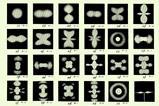
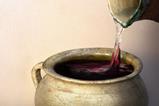
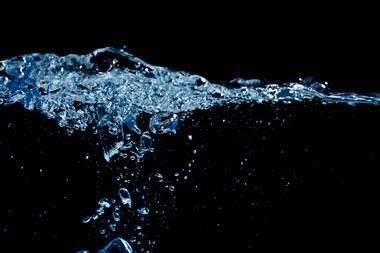



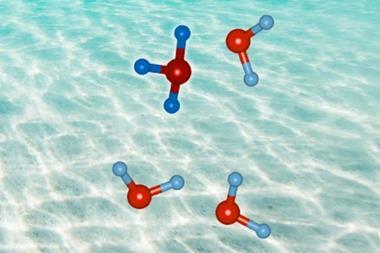


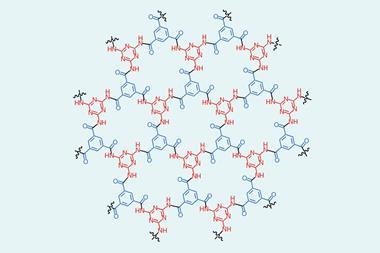


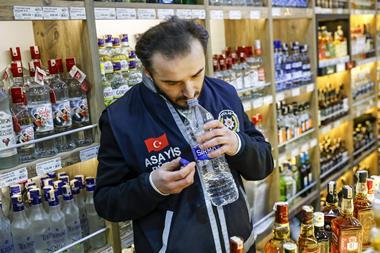

No comments yet